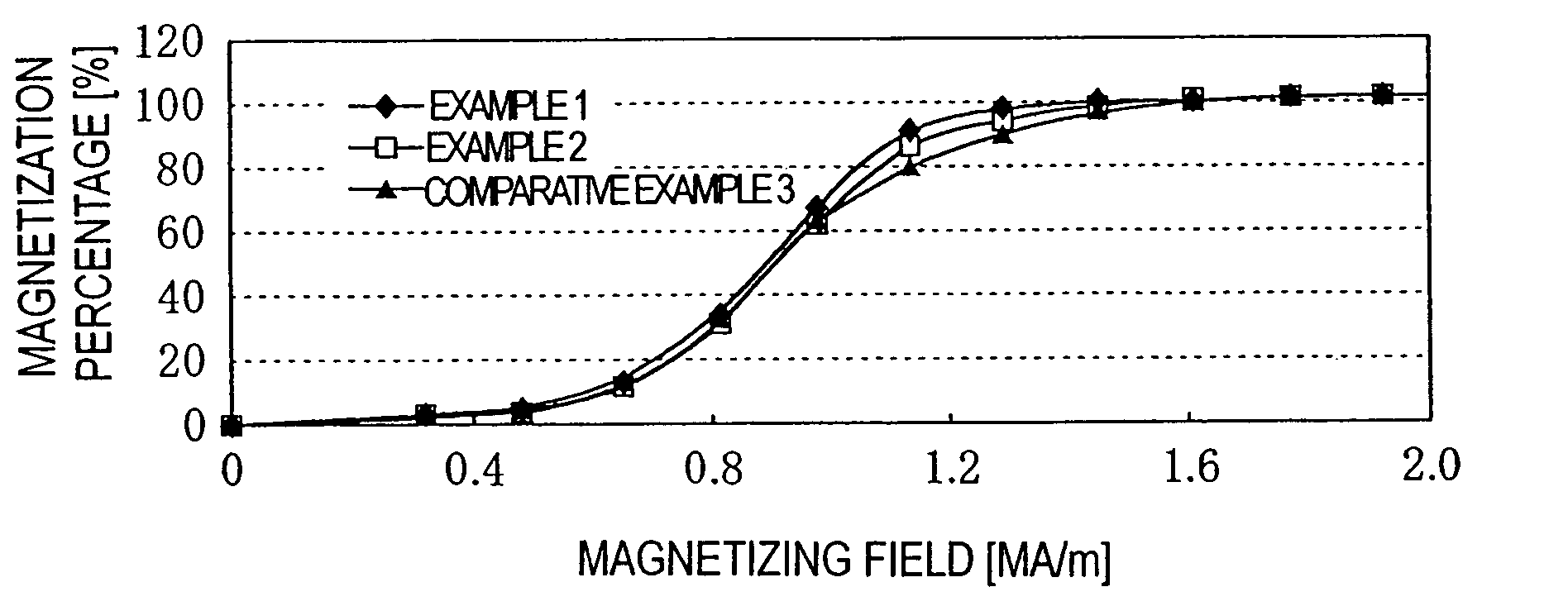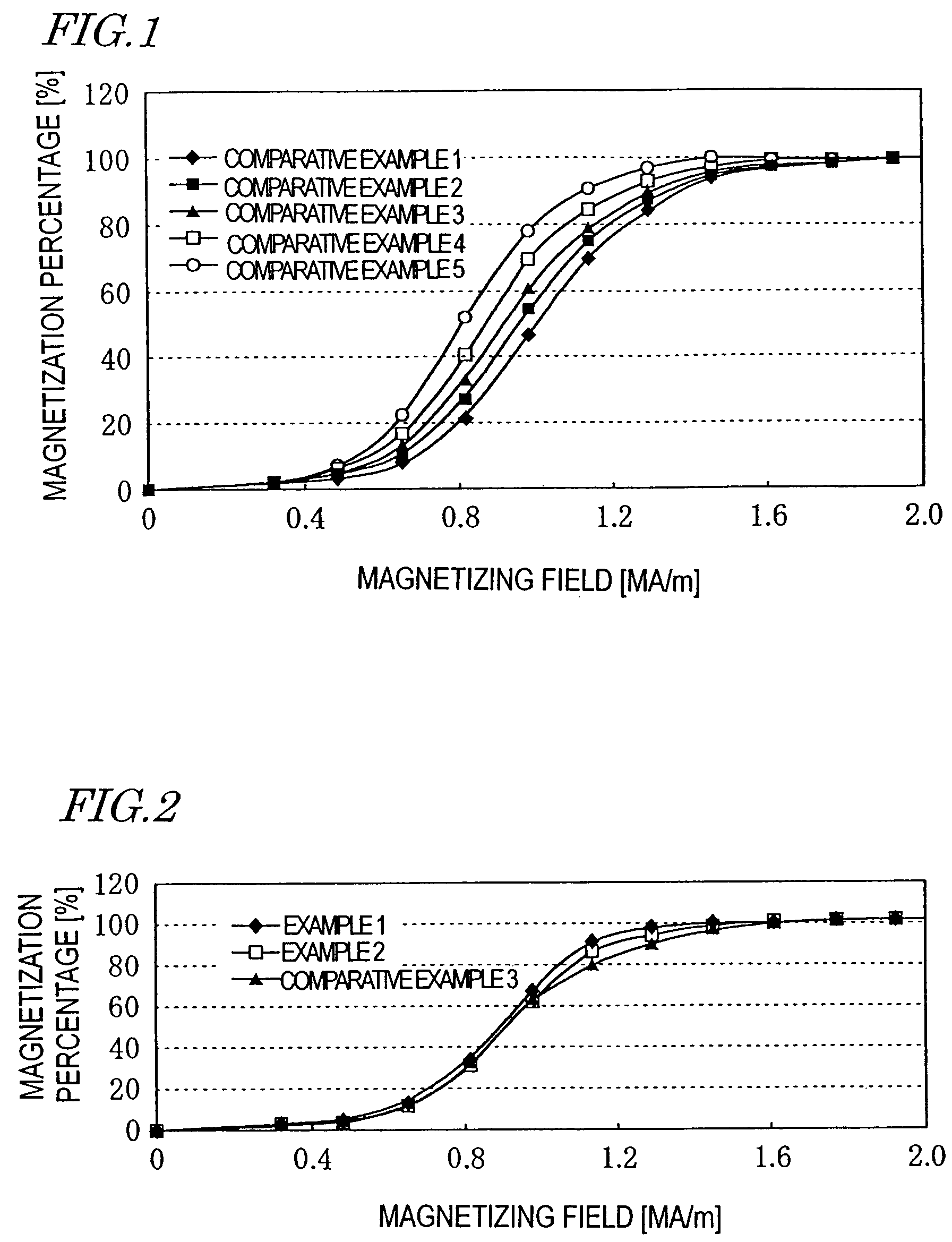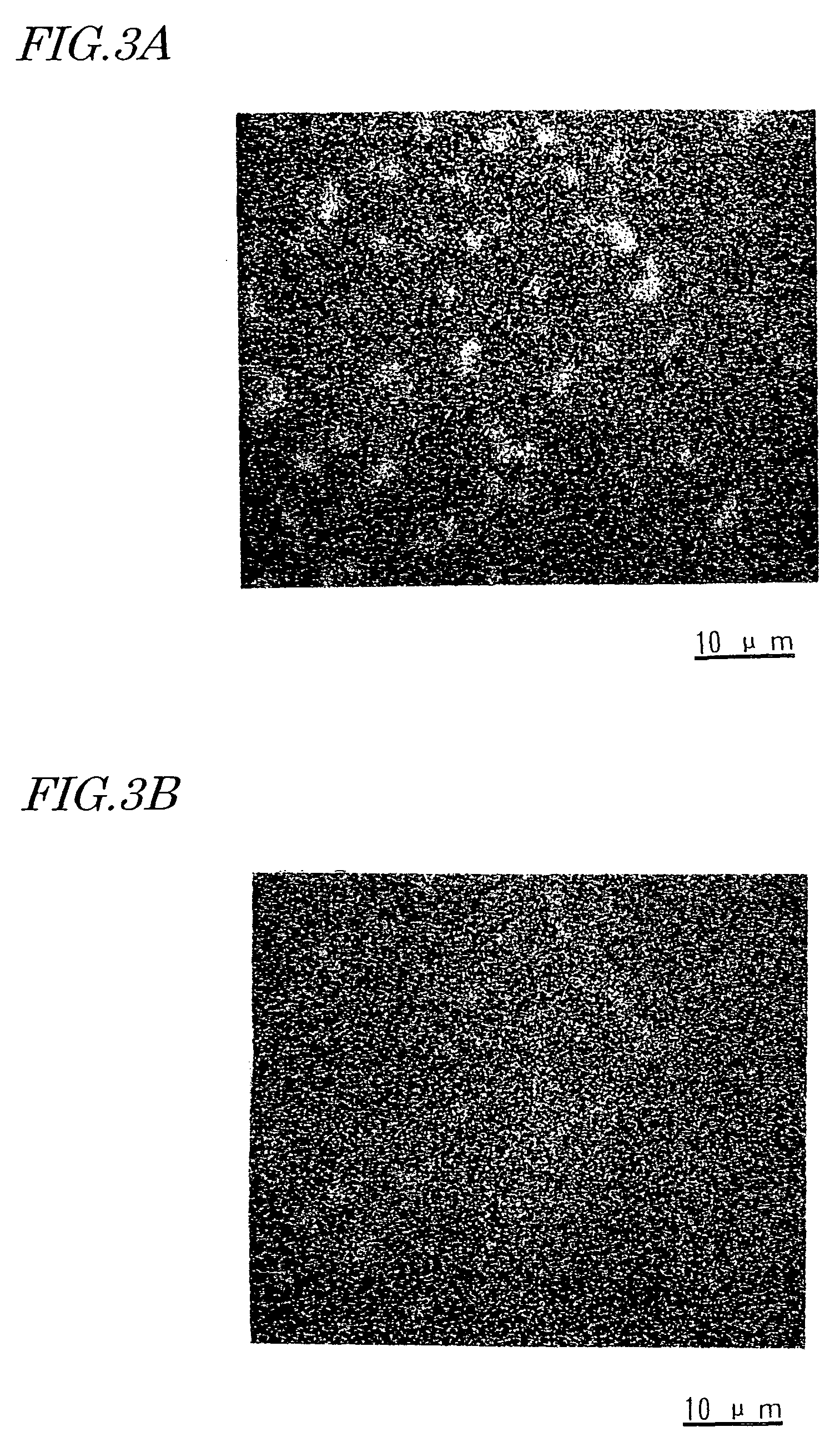Rare earth alloy sintered compact and method of making the same
a technology of rare earth alloy and compact, which is applied in the direction of magnetic materials, inductance/transformer/magnet manufacturing, magnetic bodies, etc., can solve the problems of insufficient magnetization of insufficiently magnetized magnets, difficult to apply a sufficiently high strength magnetizing field to sintered compact, and easy oxidization of fe—b based alloy powders
- Summary
- Abstract
- Description
- Claims
- Application Information
AI Technical Summary
Benefits of technology
Problems solved by technology
Method used
Image
Examples
examples
[0076]Hereinafter, a rare earth alloy sintered compact and a method for producing a sintered magnet according to preferred embodiments of the present invention will be described by way of illustrative examples. It should be noted, however, that the present invention is in no way limited to the following specific examples.
[0077]Five types of rare earth alloy powders, each of which had a basic composition including about 32.1 mass % of Nd and Pr, about 1.0 mass % of B, about 0.9 mass % of Co, about 0.2 mass % of Al, about 0.1 mass % of Cu and Fe and inevitably contained impurities as the balance and in which Dy (i.e., an exemplary HR) was substituted for a portion of Nd and Pr (i.e., exemplary LRs), were prepared. In these five types of rare earth alloy powders, Dy was included at about 0 mass %, about 2.5 mass %, about 5 mass %, about 7 mass %, and about 10 mass %, respectively. Based on these Dy mass percentages, these rare earth alloy powders will be herein identified by 0Dy, 2.5Dy...
PUM
| Property | Measurement | Unit |
|---|---|---|
| grain size | aaaaa | aaaaa |
| thickness | aaaaa | aaaaa |
| size | aaaaa | aaaaa |
Abstract
Description
Claims
Application Information
 Login to View More
Login to View More - R&D
- Intellectual Property
- Life Sciences
- Materials
- Tech Scout
- Unparalleled Data Quality
- Higher Quality Content
- 60% Fewer Hallucinations
Browse by: Latest US Patents, China's latest patents, Technical Efficacy Thesaurus, Application Domain, Technology Topic, Popular Technical Reports.
© 2025 PatSnap. All rights reserved.Legal|Privacy policy|Modern Slavery Act Transparency Statement|Sitemap|About US| Contact US: help@patsnap.com



